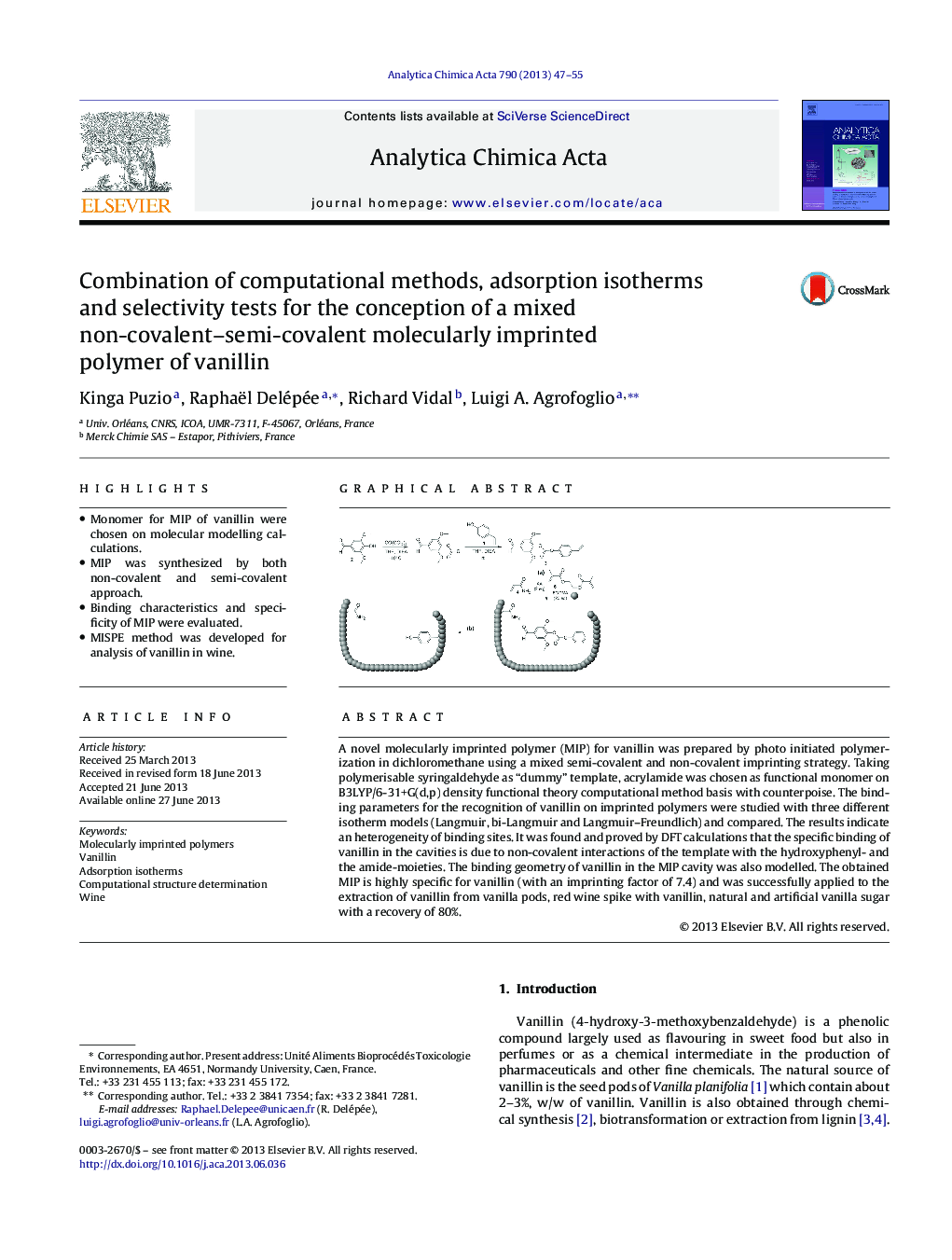| Article ID | Journal | Published Year | Pages | File Type |
|---|---|---|---|---|
| 1164571 | Analytica Chimica Acta | 2013 | 9 Pages |
•Monomer for MIP of vanillin were chosen on molecular modelling calculations.•MIP was synthesized by both non-covalent and semi-covalent approach.•Binding characteristics and specificity of MIP were evaluated.•MISPE method was developed for analysis of vanillin in wine.
A novel molecularly imprinted polymer (MIP) for vanillin was prepared by photo initiated polymerization in dichloromethane using a mixed semi-covalent and non-covalent imprinting strategy. Taking polymerisable syringaldehyde as “dummy” template, acrylamide was chosen as functional monomer on B3LYP/6-31+G(d,p) density functional theory computational method basis with counterpoise. The binding parameters for the recognition of vanillin on imprinted polymers were studied with three different isotherm models (Langmuir, bi-Langmuir and Langmuir–Freundlich) and compared. The results indicate an heterogeneity of binding sites. It was found and proved by DFT calculations that the specific binding of vanillin in the cavities is due to non-covalent interactions of the template with the hydroxyphenyl- and the amide-moieties. The binding geometry of vanillin in the MIP cavity was also modelled. The obtained MIP is highly specific for vanillin (with an imprinting factor of 7.4) and was successfully applied to the extraction of vanillin from vanilla pods, red wine spike with vanillin, natural and artificial vanilla sugar with a recovery of 80%.
Graphical abstractFigure optionsDownload full-size imageDownload as PowerPoint slide
